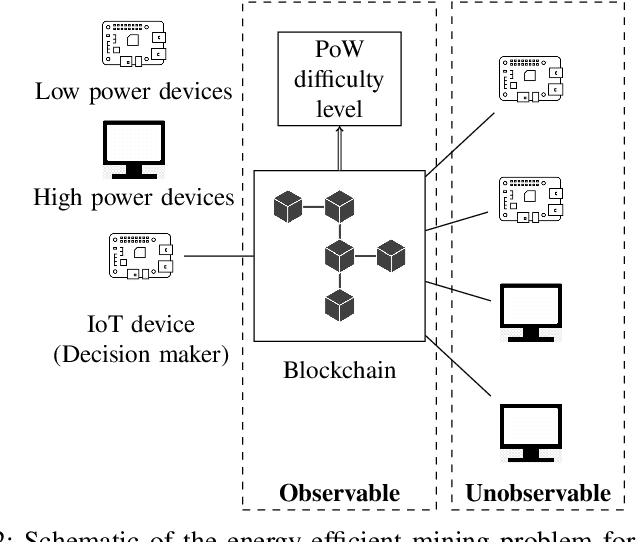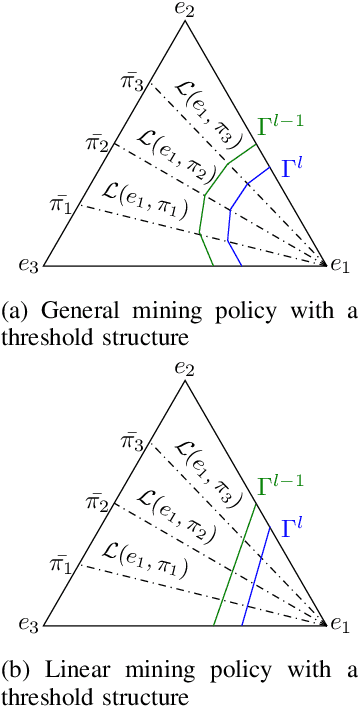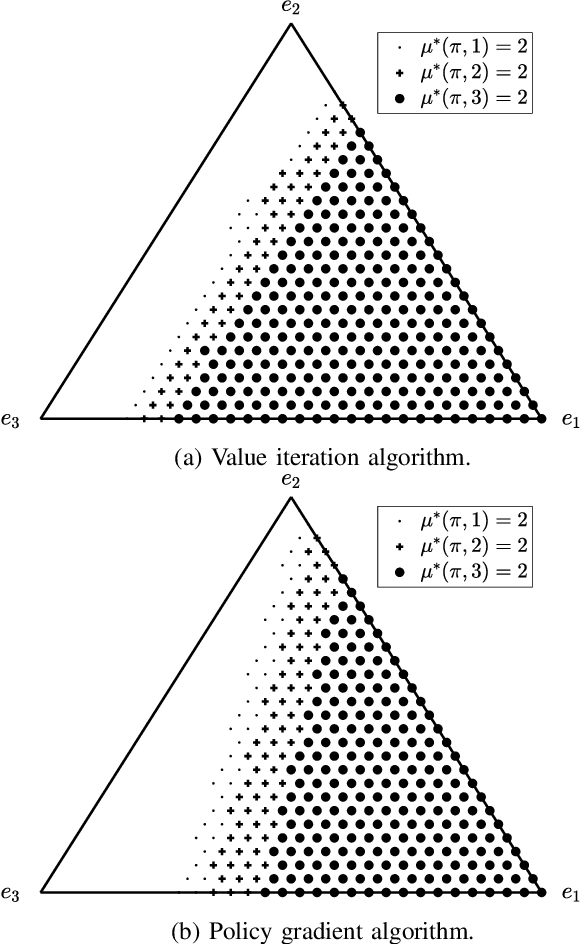Energy-Efficient Mining for Blockchain-Enabled IoT Applications. An Optimal Multiple-Stopping Time Approach
Paper and Code
May 09, 2023



What are the optimal times for an Internet of Things (IoT) device to act as a blockchain miner? The aim is to minimize the energy consumed by low-power IoT devices that log their data into a secure (tamper-proof) distributed ledger. We formulate the energy-efficient blockchain mining for IoT devices as a multiple-stopping time partially observed Markov decision process (POMDP) to maximize the probability of adding a block in the blockchain; we also present a model to optimize the number of stops (mining instants). In general, POMDPs are computationally intractable to solve, but we show mathematically using submodularity that the optimal mining policy has a useful structure: 1) it is monotone in belief space, and 2) it exhibits a threshold structure, which divides the belief space into two connected sets. Exploiting the structural results, we formulate a computationally-efficient linear mining policy for the blockchain-enabled IoT device. We present a policy gradient technique to optimize the parameters of the linear mining policy. Finally, we use synthetic and real Bitcoin datasets to study the performance of our proposed mining policy. We demonstrate the energy efficiency achieved by the optimal linear mining policy in contrast to other heuristic strategies.
 Add to Chrome
Add to Chrome Add to Firefox
Add to Firefox Add to Edge
Add to Edge